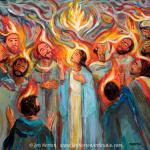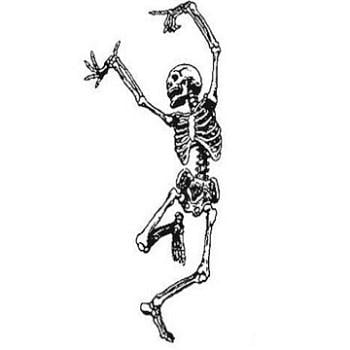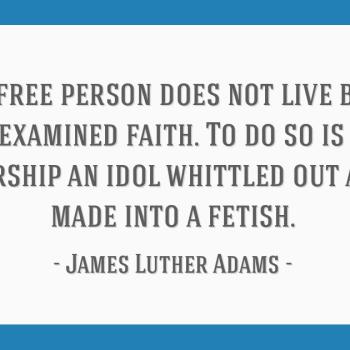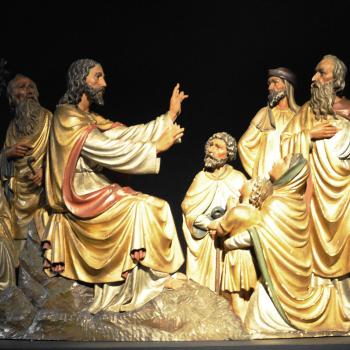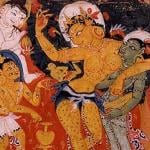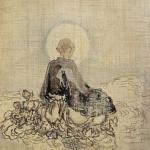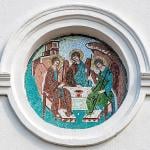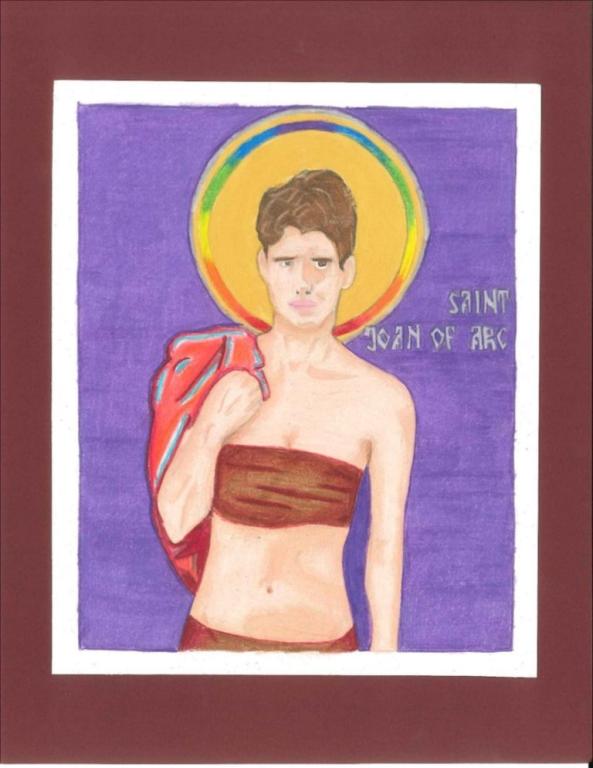
by Katy Miles-Wallace
The novelist Lidia Yuknavitch tells how once in her youth, “Joan of Arc visited me in a dream—in the dream, I was standing in our front yard and our house was on fire. She stepped out of the burning house and said ‘No one is coming to save you.’”
Joan comes to us in dreams. She can do that.
And those words. Well, if anyone knows those words, it would be Joan.
Today, the 30th of May, is observed as a feast for Joan as a saint in the Roman Catholic church. Her path to that signal honor is largely known. She was a “propertied peasant,” which means something vaguely like middle class today.
She was born into the midst of the Hundred Years War, where through the ironies of history the Norman French conquest of England eventually evolved into a large part of France being occupied by the English. As youth Joan began to have visions of the Archangel Michael, the martyrs Saint Margaret of Antioch, and Saint Catherine of Alexandria. Inspired by their words to her, Joan put on armor and gathered followers to fight the English occupiers. There were some early victories. Then disaster.
Joan was captured by the English and, interestingly, tried for heresy. From our perspective a compelling twist was how among the heretical charges was how she wore men’s clothing. Convicted of heresy, then burned at the stake, she became a French folk hero. Eventually the Church found it better to have her inside than out, and canonized her. And today is the day she’s remembered.
Who she really was and what she believed and what she experienced have been burned to ash with the bonfire.
Instead a sort of resurrection occurred. The flesh and blood person became a symbol. A dream. Actually someone who could visit others in their dreams. And there are many dreams.
Speaking of dreams.
My friend the scholar and Zen priest Wakoh Shanon Hickey delivered a sermon for Pentecost at a UCC church. Part of it was a summary of the Christian church that we’ve been living with for the last hundred or so years, what Marcus Borg calls the “earlier paradigm” and something that is in the midst of birthing. In Dr Hickey’s summation,
This earlier paradigm “is a Christian reaction against the challenges of modernity. In response to changes brought about by science, evolving views of gender and sexuality, and religious diversity, the earlier paradigm pushes back against these. It insists on the Bible as a uniquely divine product, interprets the text literally, although selectively, and emphasizes the subordination of women in one of the two acceptable gender roles. When scientific discoveries undermine a literal reading of biblical texts, this version doubles down on their pre-scientific worldview. Miracle stories are understood to be not just metaphorically, but factually true. This version insists that Christianity is the one true religion, and you must believe certain things to enter Heaven when you die. And Heaven is what matters.”
We are probably familiar with this. It’s what most people today think Christianity is.
Borg and Hickey note something else is happening. An “emerging paradigm.” It starts with a different approach to the sacred texts themselves. Here the Bible reflects “human efforts to understand God, rather than a divine revelation to humans. It interprets Bible texts by considering the historical circumstances in which they were written and sees miracle stories as metaphorical. In this view, Christianity involves transformation in this life through a relationship with God.”
In real numbers Christianity is declining in North America. Still a dominant force. And, I might add, something that has power and sees it loosening, can be very dangerous. Many people within the American Christian tradition are turning to fundamentalisms. And what we see is a growth among the reactionary forms within the decline. Politically, and there is an enormous political aspect to this, its fed by fear of what is coming, and resentments of several sorts. Every iota of it based in loss. And manifests as rage.
I think how a lot of what it focuses on in its political manifestation is an obsession with sexual minorities and the claiming of rights by people who have forever been under other people’s thumbs. Or more who have had other people’s feet on their necks for, well, just about forever.
The emerging spiritual paradigm is a dream of relationships, of what intimacy might look like when we look at possibilities rather than at restrictions. It is a religious or spiritual impulse as much as anything else. The emerging is concerned with liberation, not constraint. And it turns out in this view liberation is, well, liberation.
This emerging paradigm may or may not have much to do with churches as they’re currently configured. But it is an expression of a deep spiritual insight. It is what is coming.
Although not without a fight. And, actually, this reaction could forestall what seems to me to be inevitable. The spirit’s movement is ultimately irresistible, I feel. But. This week in Uganda they added a death penalty for “aggravated homosexuality.” And here in North America hundreds of laws are being put forward to curtail LGBTQ rights. Which the church’s are dividing over the issues of old and new paradigms.
I find it fascinating that one of the inflection points in this shift turns on drag queens. Specifically drag queens reading books to children. It would appear, certainly from the most conservative, from the most reactionary perspective, that people of one gender wearing the clothing assigned by tradition to another is a challenge to the very foundations of the culture.
Which brings us to Joan. And the charge of heresy in part established by a woman, we might say girl, she was nineteen when they killed her, wearing a man’s clothing.
And. I think of today. I think of old paradigms and new.
I think of struggle. And hurt. And possibilities.
I think of Lidia Yuknavitch and her dream. “Joan of Arc visited me in a dream—in the dream, I was standing in our front yard and our house was on fire. She stepped out of the burning house and said ‘No one is coming to save you.’”
Who saves us?
I think about how we become dreams. All of us. Some with fire, others with tragedy, others with age or love. All of us become part flesh and part dream. The new paradigm may be inevitable. But…
Who saves us? How does the new paradigm take flesh?
And with that I think of how we can and sometimes do visit each other in that world which joins us all…
And I see an answer to our dreams…


